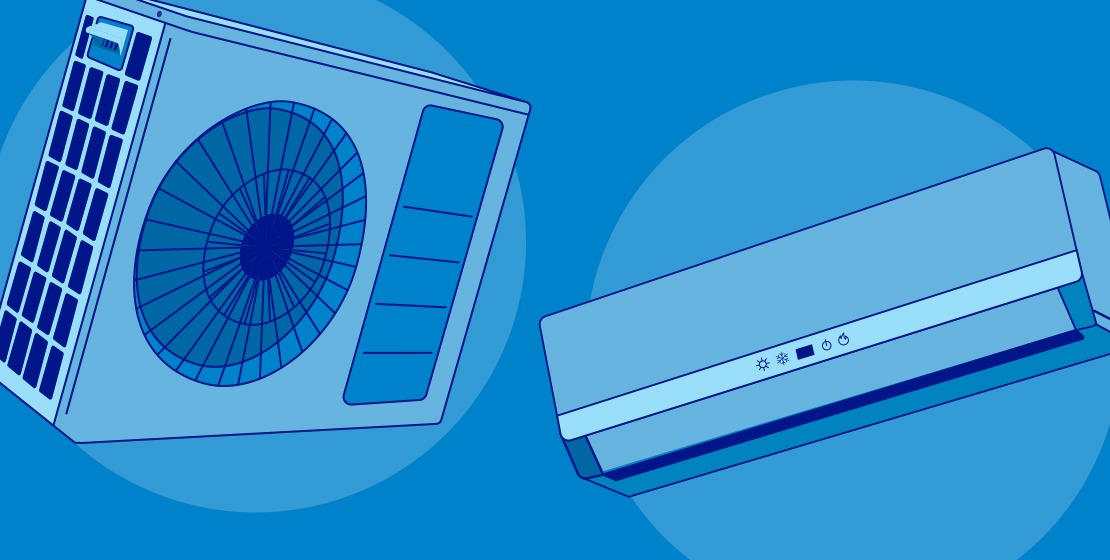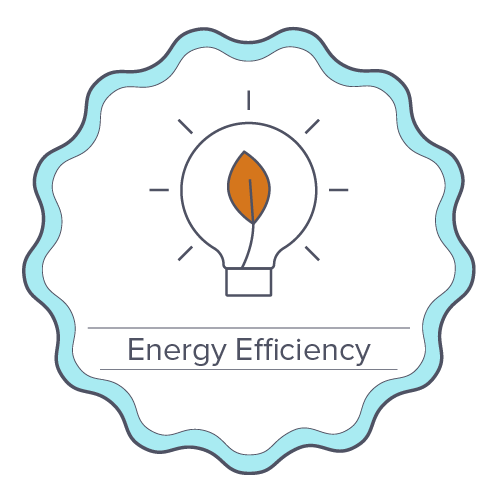Eighty-three percent of our customers who took the October home energy efficiency quiz correctly answered that heating and cooling is the single largest use of energy in a home. Your HVAC system is critical to your home’s comfort and a big part of your annual energy costs, so it’s a good idea to have a replacement in mind before you need a new system.
Three signs that your HVAC system may need to be replaced:
- It’s more than 15 years old or needs frequent repairs.
- Your energy usage is going up without any other household changes.
- Your HVAC system struggles to meet thermostat setpoints.
Luckily, there’s an energy-efficient option: heat pumps. Heat pumps can keep your home comfortably warm during the winter months, but they can also keep you cool in the summer—while reducing your electricity use for heating by around 65% compared to electric furnaces or baseboard heaters.
And when the time comes to make a change, you can take advantage of special incentives to upgrade your system.
How do heat pumps work?
In winter, heat pumps extract heat from the outside air and transfer it into your home. Even when it’s very cold outside, there is still heat energy in the air that heat pumps extract to warm your home.
In summer, they work like a standard air conditioner by absorbing unwanted heat in the air inside your home and transferring it to the air outside.
To calculate how much you might save by switching to a heat pump, go to the ENERGY STAR® page here, and click on “Calculate Your Savings.”
Image: Left to right – Ducted heat pump and ductless heat pump
Types of heat pump systems
Ducted air source
These heat pumps use your home’s existing ductwork. During the summer months, they serve as central air conditioners and lower cooling costs. In winter, they supply more efficient heat and cost less to operate than conventional furnaces, boilers or electric resistance heat.
Ductless
Often referred to as a “mini split,” a ductless heat pump is a good alternative to replace a window cooling unit as well as radiators or baseboard heating. They can be an excellent solution for older homes and additions or outbuildings that do not have existing ductwork.
We make the decision easier with special incentives!
We offer a rebate of up to $450 for air-source heat pump systems and $400 per outdoor unit for ductless mini-split systems.
Plus, heat pumps with a thermal efficiency rating of 75% or more qualify for a federal tax credit of up to $2,000 per year. You may also be able to include installation labor in your cost calculation. Learn more here.
There’s money hiding in your home, and a few simple changes can help you find it! Learn more about these and other ways you can Save with PPL.







We replaced our HVAC system a few months ago. July 25, 2023
Lebo Plumbing, Heating & Air-conditioning Carlisle PA.
We can provide a receipt and contact info
It was a Bryant System
Will this qualify for a rebate?
Good Afternoon, please review our Rebates at https://www.pplelectricsavings.com/ppl/homeequipment/products, Thank you!
It would be helpful to include information on how to find a heat pump that is appropriate for the cold climate of PA and a knowledgeable installer instead of just republishing general info that is currently found all over. More information on the new expanded Federal credits and how they are being adopted in PA would also be helpful.
Great article! It’s so easy to put off thinking about a new HVAC system, but your points really highlight why it’s important to plan ahead. I appreciate the helpful advice on how to assess needs and timing—it’s given me a lot to think about for the future. Thanks for the valuable insight!
Great article! Planning for your next HVAC system is a smart idea, especially as technology advances and energy efficiency becomes a priority. Proactive planning ensures you find the best system for your needs, avoid unexpected breakdowns, and save on long-term costs. Don’t wait—start exploring your options today!
Planning for your next HVAC system is essential for ensuring optimal performance and energy efficiency. By starting early, you can explore the latest technologies, compare options, and budget accordingly to achieve the best results for your home.
Great article! Planning for your next HVAC system is essential for maintaining energy efficiency and comfort. The tips provided here make it easy to assess your current system and prepare for an upgrade. It’s a smart move to plan ahead and ensure your home stays comfortable year-round. Thanks for the advice!
The Heating Ventilation and Air Conditioning trends for 2025 focus on efficiency, sustainability, and smart technology. These improvements enhance comfort, lower costs, and help protect the environment. Staying informed allows you to make smarter choices for your home or business.
Finding reliable Heating and cooling near me in 2025 means more than just comfort—it’s about energy savings, safety, and long-term system performance. A trusted local service helps you stay prepared year-round with expert care and timely support.